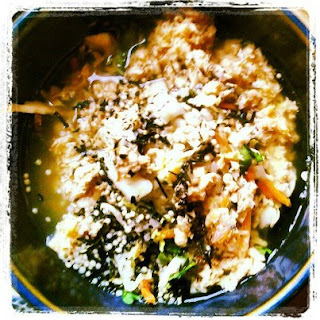Between the mosquitos and the humidity, summer in DC can be less than ideal. I mean, who decided it was a good idea to build the city on a swamp anyway? That's why we're here to keep you in Ginger Limeade, Sweet Green tea, iced Moroccan Mint, or whatever chilled beverage strikes your fancy. Sometimes even Teaism is closed though (like on the 4th of July), so here are some ideas to try at home!
Casablanca Cooler
(Adapted from The Book of Green Tea by Diana Rosen)
8 ounces Moroccan Mint tea (brewed)
4 ounces tropical fruit juice of your choice (mango, pineapple or tropical punch work well)
1 ounce passionfruit syrup
4 ounces crushed ice
Shake in a large pitcher or jar until frothy. Makes 2 servings.
Peach-Tea Jam
(from Steeped in Tea: Creative Ideas, Activites & Recipes for Tea Lovers, also by Diana Rosen)
This jam is delectable on its own, as a dipping sauce for dumplings or spring rolls, to baste chicken, or on toast for breakfast. Or you could put it in small jars and give them to friends...
The recipe was created by Chef Wemischner to highlight the fruity character of a fine Darjeeling tea. Once prepared, the jam can be kept for at least a month. Fresh summer peaches work best, of course, but canned peaches in fruit syrup (no extra sugar) will do when the season isn't right.
16 ounces (2 cups) spring water
2 teaspoons loose-leaf Darjeeling tea
4 pounds fresh peaches, peeled, pitted, and roughly chopped
2 pounds granulated sugar
1/2 cup chopped crystalized ginger
1. Bring the water to 180° F and steep the tea for 3 minutes. Drain the liquor to use for the recipe.
2. Place all of the ingredients except for the ginger in a heavy 3-quart saucepan. Bring to a boil over medium heat, skimming frequently during the first few minutes of cooking.
3. Reduce the heat and cook just until the mixture coats the spoon, then flows off slowly. It should look like a very thing syrup.
4. Add the ginger. Cook for about 15 minutes, stirring frequently.
5. Let stand uncovered at room temperature until cool, then refrigerate, well covered.
Makes 3 quarts of jam.




